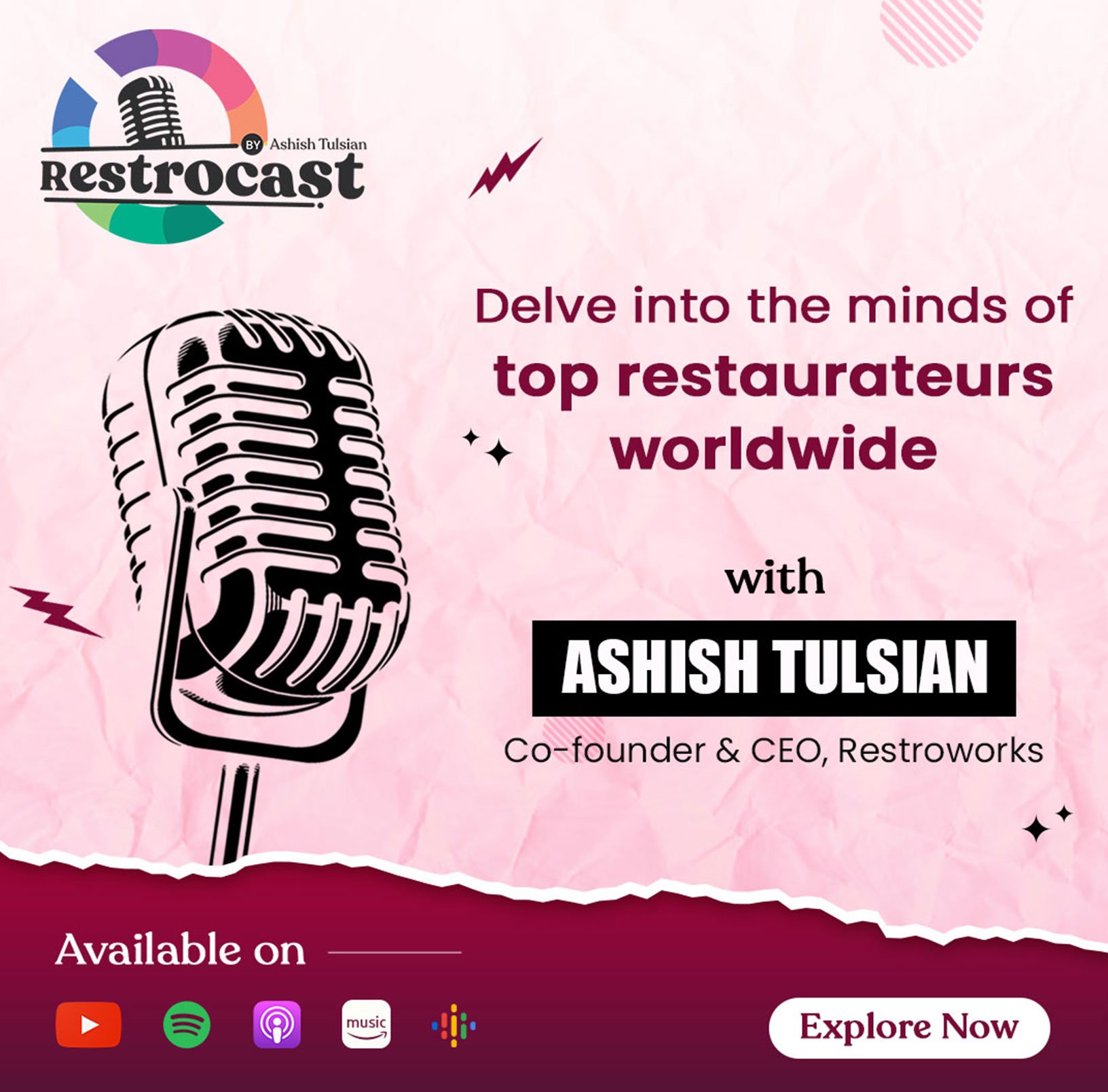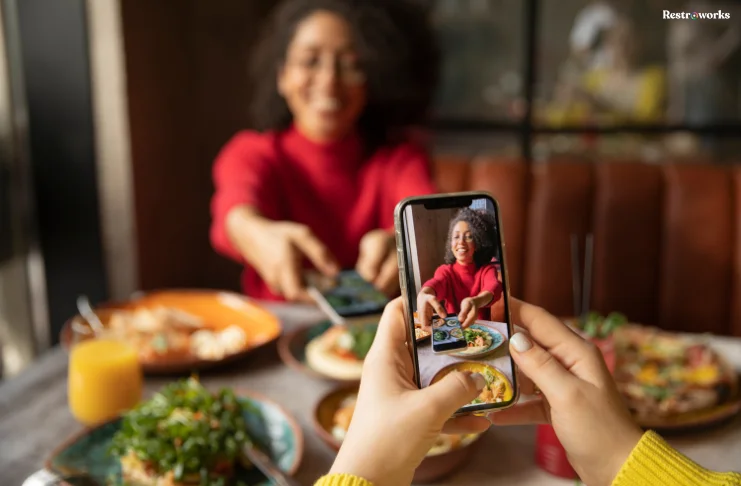
Influencer marketing is the new favorite digital marketing strategy for restaurants to quickly reach and influence a target audience, which might be difficult and cost more through PPC and SEO. Moreover, 69% of consumers (including those in the restaurant industry) trust recommendations from influencers rather than brands. That explains why restaurant influencer marketing is so much on the rise. However, seeing success with your restaurant influencer marketing campaigns could be highly challenging unless you know the dos and don’ts.
Building a strong social media presence and collaborating with local influencers who resonate with your brand can amplify your reach. Effectively utilizing various social media channels ensures your influencer marketing campaign engages with the right audience and drives meaningful results.
Let’s understand what it takes to succeed with influencer marketing for restaurants.
What is influencer marketing for restaurants?
Influencer marketing for restaurants utilizes the power of social media food influencers to reach new potential customers. These food influencers aren’t limited to celebrities—they can be food bloggers, reviewers, or even local personalities with a strong online following. They use their audience’s trust and engagement to promote your restaurant’s food, atmosphere, and unique selling points.
Influencer posts can significantly amplify your restaurant marketing efforts, leveraging word of mouth marketing to enhance credibility and attract more patrons. By collaborating with the right social media influencer, restaurants can effectively showcase their offerings and connect with a broader audience.
Under a paid collaboration contract, influencer marketers create high-quality content to recommend your restaurant to their audience. Restaurants leverage the trust of influencers to build trust and aim for conversions through increased online orders or footfalls to their restaurant.
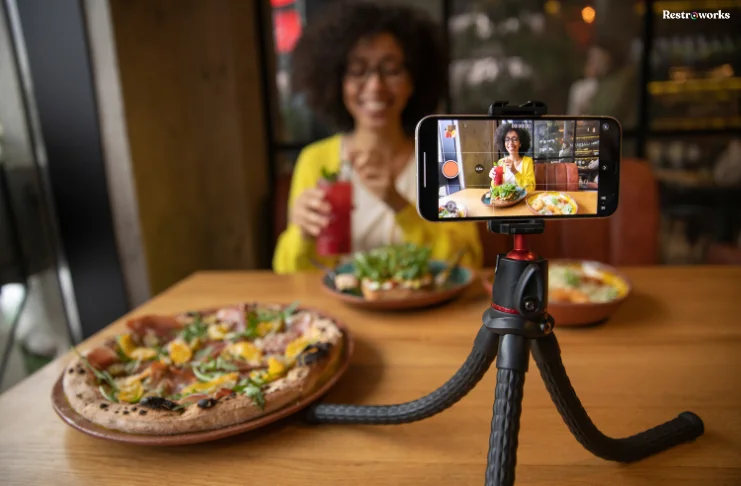
Benefits of influencer marketing for restaurants
Let’s understand how partnering with influencers can unlock a myriad of benefits. Some of the valuable benefits are mentioned below.
1. Increased brand awareness
Establishing a good brand value takes years of hustle. Because the competition is tough and customers have numerous options. Moreover, people trust established restaurant brands, making it hard for new restaurants to draw the spotlight. However, successful food influencers already have a targeted audience that trusts their recommendations. Marketing your restaurant’s best USPs in front of new potential customers can spark excitement and encourage people to try your offerings. When you capitalize on such opportunities by delivering positive customer experiences, your brand value elevates to a new height.
2. Greater engagement
As per a recent study, the average engagement rate for food and beverages on Instagram is 1.35%, and on Facebook, it is 1.93%, way higher than that for technology, travel, hospitality, and leisure. On top of it, today’s Gen Zers trust influencers more than celebrities. Because influencers invest time in producing quality content, they blandly promote your restaurant and give sufficient authentic reasons to back their claims. Otherwise, they might lose their followers’ trust for bad recommendations. You can rest assured of high engagement in online orders, website traffic, and restaurant visits.

3. Highly cost-effective
Influencer marketing with micro-influencers can cost way less than traditional advertisements through television and print ads. The latter charge you a hefty amount for prime slots or expensive ad space. Also, you have to pay again to advertise on such premium platforms. However, influencers can permanently promote your restaurant in their stories or for a long time for a relatively nominal price. This also gives you time to measure the success rate of your campaigns and optimize your costs accordingly.
4. High-profit potential
Surprisingly, as per a study, influencer marketing campaigns generate an average of $5.78 profit against every dollar spent, some seeing as much as $18. Around 32% of businesses experience the highest ROI on Instagram influencer marketing, followed by 20% on Facebook and YouTube. These ROI figures are 11 times better than that for traditional marketing methods. That is a significant return on investment because most first-time conversions from a pre-interested audience can be your recurring customers if you can serve them well.
How much does influencer marketing cost
Determining a fair price for influencers is a critical task. However, you can easily determine a base price to help with your negotiation if you know what factors drive the pricing. You have to look for these factors:
Platform: Rates can vary depending on the platform (YouTube, Instagram, TikTok, Facebook).
Content type: A high-quality video content on TikTok might cost more than a static post on Instagram or a one-line review on Twitter.
Followers: Nano (1k-10k) and Micro (10k-50k) influencers might charge less than Macro (550k-1 million) influencers.
Campaign scope: A multi-level promotion would cost more than a one-time post but might offer scope for further negotiation.

| Influencer Type | Followers | Cost Per Post |
| Mega Influencers | 1 Million+ | $10,000+ |
| Macro Influencers | 500K-1 Million | $5000-$10,000 |
| Mid-tier influencers | 50K-500K | $500-$5000 |
| Micro-influencers | 10K-50K | $100-$500 |
| Nano influencers | 1K – 10K followers | $10-$100 |
How do you choose influencers for your restaurant, and when?
Consider the following factors when identifying the right influencers for your campaign.
1. Target audience:
Ideally, a majority of your potential influencers’ followers should represent your target customer niche. Look for influencers with your ideal customer demographic (age, location, interest) to ensure maximum impact.
2. Value engagement rate over the number of followers:
Engagement rates matter more than the follower count. Influencers with more likes, comments, or shares on their posts relative to their audience size represent strong content creators known for stirring the curiosity level of their audience very well.
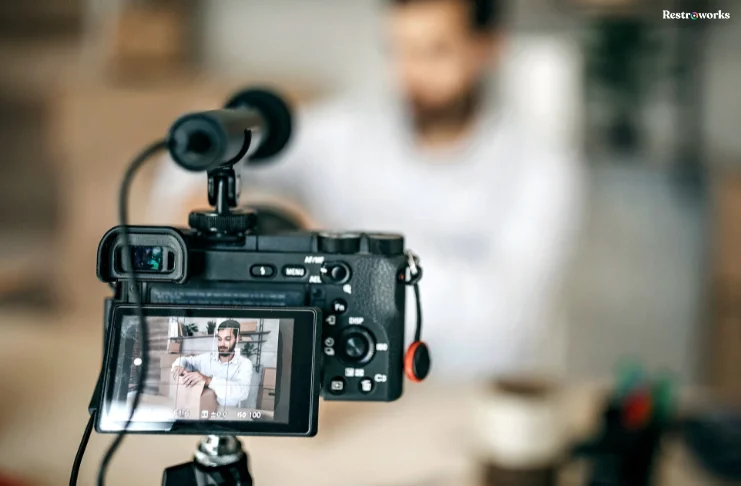
3. Content quality and style match
Check whether the content style and quality of the influencer resonate with your brand image or not. They are your virtual invitations. If they can’t recreate the vibe you have to offer to your customers, it’s like sending the wrong invitation! That said, if you want to focus on fresh, healthy ingredients but your influencer is obsessed with fast food, it wouldn’t be a good choice.
4. Check for authenticity
If your influencer seems too promotional, viewers may find it inauthentic and impersonal. This can backfire for your restaurant. Influencers who seem to read a script for a paycheck are a big no. Instead, look for the ones who care to explain sufficient reasons why they love the food they are reviewing. The more authentic the influencer sounds, the more influence it will have on your potential audience.
But how do you know when is the right time to hire influencers for restaurant marketing?
You should consider partnering with influencers for marketing under any of the following scenarios:
You want to expand your customer base and connect with new customers who might be interested in your niche
You are launching a new menu or hosting a special event to create a buzz in the market.
You want to build brand awareness in the local market.
You want to enhance the credibility of your restaurant through trusted influencers.
Where to find the right influencers to boost your social media presence
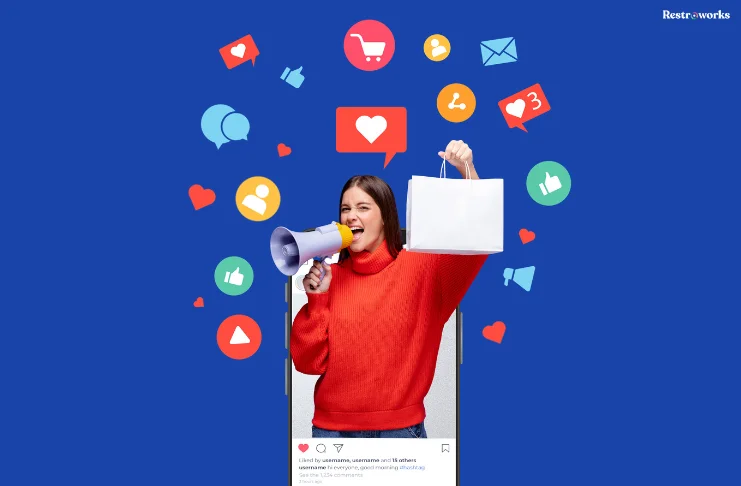
There are several ways to find your ideal influencers for restaurant marketing.
1. Search from social media platforms
As per research, there are 18,078 food influencers in the US. You can find your ideal influencer by hashtags related to your city and cuisine. For instance, searching #VeganDallasEats on Instagram and TikTok search boxes would fetch posts about influencers who frequently post about vegan dishes in Dallas and have a strong local following.
2. Analyze your followers
If you have official social media pages, that’s a very good place to start looking for your potential influencer. Look if any loyal customers regularly interact with your content and might be interested in collaborating.
3. Leverage influencer marketing platforms
There are several influencer marketing platforms from which you can find top influencers for your niche from all major social media platforms in one place. These platforms curate, verify, and shortlist influencers, allowing you to run campaigns from their unified dashboard for a monthly or yearly subscription fee.

How do you run an influencer campaign?
Follow these steps to run a successful influencer campaign.
Step 1: Set SMART goals
Set SMART goals to start your campaign with clarity. Here is what each term stands for:
Specific: Clear goals to achieve with influencer campaigns.
Measurable: Metrics to measure the success of campaigns.
Attainable: Realistic goals that are achievable under current capacity.
Relevant: Goals relevant to overall business objective.
Time-bound: Clear timeframe to achieve goals through influencer campaigns.
Let’s say you want to increase brand awareness through influencers. Now, a non-SMART goal may sound like getting more potential customers to know your restaurant.
A SMART goal, on the other hand, would be particular and detailed, such as increasing website traffic by 30% in the next three months through influencer campaigns focused on restaurant reviews.
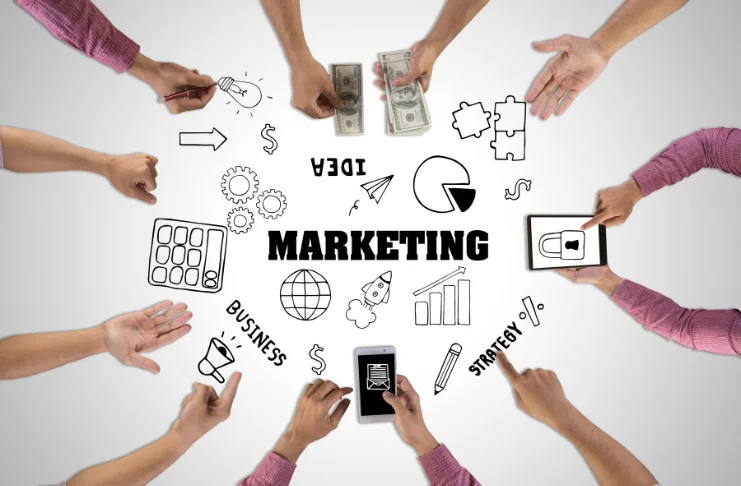
Step 2: Create a campaign
Create a campaign theme based on your target audience. For instance, if your target customers are families, promoting a seasonal lunch menu will do better than a couple-special dinner menu. Next, decide the type of content your influencers should work on, e.g., photo- or video-based reviews. Based on your deliverables, decide the number of influencers and the social media platforms you want to target at the start. Most importantly, do not forget to convert engagements into conversions through actionable CTAs linking to direct reservations or online order pages.
Step 3: Decide your budget
Set a budget you want to spend on influencer marketing efforts. However, zeroing in on an ideal figure is often challenging for many restaurants new to influencer marketing. As per industry research, brands should allocate 25% of their digital marketing budget to influencer marketing. However, it’s perfectly okay if you want to start with a low bar and adjust your budget with time and experience. The budget should consider campaign goals and influencer costs, considering your target audience. Besides all these costs, keep some additional budget for complementary meals for influencers or paid advertising (optional) to boost influencer’s posts.
Step 4: Find and reach out to influencers
After finalizing your budget, it’s time to reach out to influencers. You can search for them using trending hashtags on Instagram, TikTok, or Twitter and reach out to them via direct message. You can also leverage paid influencer marketing platforms to find top micro and macro influencers for various niches, including restaurants. Alternatively, you can add a link to a dedicated influencer landing page on your social media handles and website so interested influencers can contact you directly.

Step 5: Shortlist and negotiate terms
While shortlisting influencers, make sure their follower base aligns with your target audience. Moreover, ask for their engagement rate to understand how receptive the audience is to their content. Assess their content quality and check how they resonate with your brand. Share your expectations from this collaboration once you shortlist influencers based on these metrics. Based on your goals, influencers can suggest the types of posts, the number of posts to target, and their budget to execute the entire campaign. Take this opportunity to negotiate terms. For instance, the compensation can be a fixed fee, complimentary meal, or a revenue-sharing model. Tempt them to offer bonus rewards for exceeding target engagement rates. This will motivate them to put their best into the job. Put all the terms of your discussion into a contract to retain clarity and start the campaign on the right foot.
Step 6: Execute
Now, it’s time for influencers to deliver on their promises. Help your influencers with the required resources so that they can showcase the best you have. Apart from signature dishes, encourage influencers to capture the overall energy of the place. Also, highlight your USPs, such as locally sourced ingredients, unique dining experiences, or special offerings.
Step 7: Review and improvise
You can get an early glimpse of your content performance by requesting your influencer’s platform analytics. From analytics, you can check reach, impressions, click-through rate (CTR), and audience demographics in real time to understand where to focus in your campaign for maximum impact. For instance, let’s say the demographic data shows your campaign for a new line of cupcakes is attracting clicks from teenagers. In contrast, your target audience is busy professionals who might like cupcakes for office celebrations or afternoon treats. This might help you optimize your strategy for future campaigns.
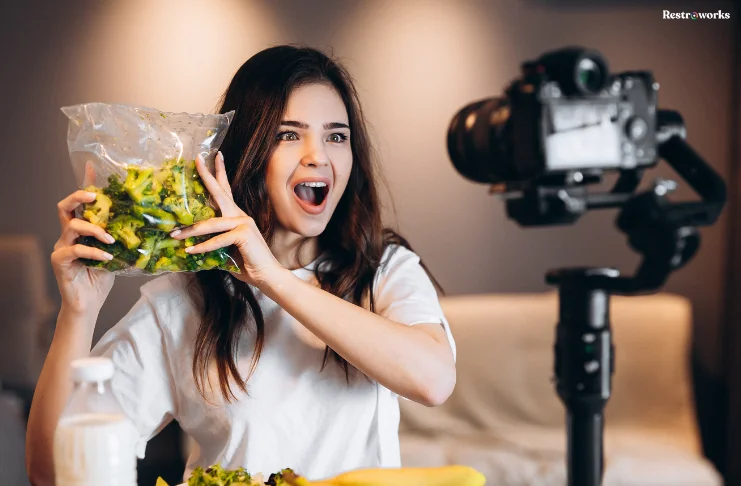
How to maximize ROI with restaurant influencer marketing
There are two ways you can maximize the ROI of your ongoing campaigns- by optimizing campaigns and by building long-term strategies.
1. Campaign Optimization
Here are some ways in which you should optimize your campaign:
- Monitor KPIs
Constantly monitor KPIs like reach, engagement, website traffic, etc., to measure the success of your campaign. For instance, let’s say one of your posts related to brunch combo meals minted 10K views but received only 20 likes and 10 comments. The low engagement rate, despite many views, indicates that the content failed to resonate with the target audience. This analysis would help you take informed actions. You might work on the content or consider partnering with influencers with a target audience interested in brunch.
- Utilize user-generated content (UGC)
Encourage (or incentivize) customers visiting your restaurant through influencers to share their experience on social media with a branded hashtag. Branded hashtags through UGC content can help you reach more customers and build authenticity – all while capitalizing on the efforts of your influencers.
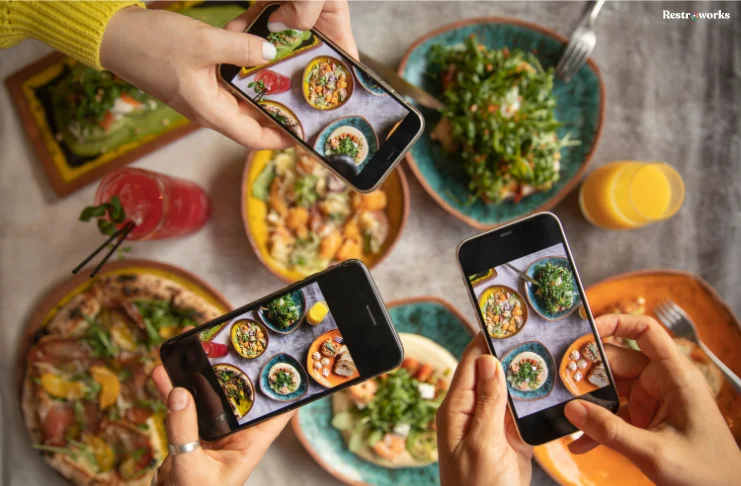
2. Long Term Strategy
These strategies are focused on lowering campaign costs in the long run.
Build long-term contracts with the right influencers
Try to make long-term contracts with influencers who consistently deliver better engagement and drive conversions through quality content. This will help you lower the costs over time.
Use influencer marketing tools
Good influencer marketing tools enable you to manage all operations of your campaign(s) from one place. These tools have advanced features to manage influencer discovery, communication, contract signing, payment disbursement, and KPI monitoring—all from a single dashboard. This way, you can save time and resources and maximize your ROI.
Case Study
Pepe’s Restaurant Group, with five Manhattan locations, was looking for an innovative marketing strategy to reach new audiences. The group partnered with a local influencer marketing agency to run influencer marketing campaigns and other marketing strategies to get the public excited about each restaurant. The team secured partnerships with twelve influencers and ran campaigns over six months to generate 4.5 million impressions and 66,500+ social interactions, with an average engagement of 2,000+ per post.

Frequently Asked Questions
Social media is the best place to find restaurant influencers by typing relevant hashtags (e.g., #foodblogger, #[yourcity]eats) in the search bar. Alternatively, you can check your official page followers for the most engaged followers with at least 5K+ followers. They might be your great partners. Industry publications and influencer marketing platforms are also helpful but paid mediums to discover ideal influencers for your restaurant.
Most often, restaurants run paid promotions, and influencer marketing is a part of that program. They pay influencers to promote their restaurant in exchange for a service fee, a complimentary meal, or a revenue-sharing agreement. The compensation may vary depending on the number of followers, percentage of target customers, engagement rates, and the scope of future collaborations.
The food influencer marketplace is a common ground for restaurants to collaborate with social media influencers known for promoting food-related content to help food chains boost their business. Restaurants look for food influencers with large followers to raise brand awareness or micro-influencers to attract potential customers quickly.
To become a successful restaurant influencer, you must meet the needs of both restaurants and your followers. However, first, you must grow a niche audience by focusing on a specific cuisine or restaurant type. To expand your audience base, create valuable content about street food reviews, calorie counts, health advice, etc. Once you cross a minimum of 5K followers, reach out to local restaurants or share details on your bio page for collaborations. When restaurants see you have an engaged niche audience they are targeting, you will start receiving offers.

